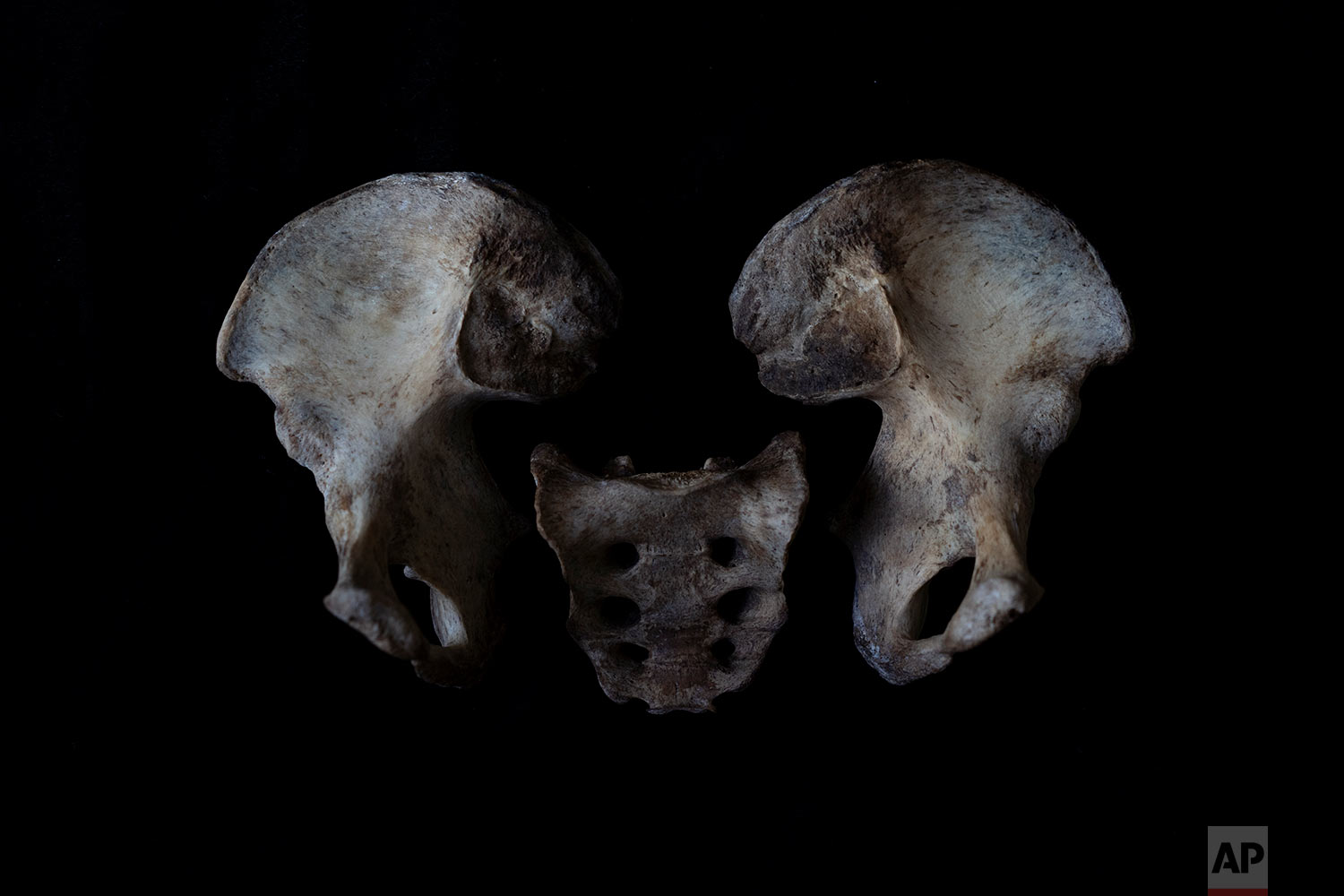Thousands of anonymous bodies of migrants found in South Africa

Millions of migrants have slipped in through South Africa’s porous borders for years without documentation. They live a life of anonymity. And when they die, they remain unidentified: 4,311 in the Gauteng province between 2014 and 2017.
A lot of the bodies end up in a mortuary in Hillbrow, the country’s busiest morgue, with 3,000 bodies being investigated every year. Ten percent of those remain unclaimed and unidentified. When undocumented migrants die and nobody claims their body, their deaths are not counted in any national or intentional tally.
BETWEEN HOPE AND MOURNING
In this Friday, Aug. 24, 2018 photo, Zimbabwean migrant Banele Nkomo holds a photograph of her missing brother, Francis, in Johannesburg. (AP Photo/Bram Janssen)
Ever since Francis Nkomo went missing 10 years ago, his older sister Banele has been waiting for a sign of life. “I miss him,” says Banele while holding his picture, all she has left of her brother. “I miss him a lot.”
Francis, a Zimbabwean migrant living in Johannesburg, was 29 when he disappeared, one of thousands who have gone missing in South Africa.
Maybe Francis Nkomo lies in one of those graves. His sister is hoping for an answer.
“I’m just praying to see him back,” Banele says. “Or if someone can tell me that he died, we can all have peace.”
A MOTHER’S WATCHFUL EYE
Zimbabwean migrant Kholakele, who lives with her husband Arnold and their five children in a crammed building in downtown Johannesburg, has heard the stories of people gone missing. The family entered the country illegally three years ago to find work.
Afraid that one day they will end up as anonymous bodies in the streets of Johannesburg, where crime rates and traffic accidents are steep, they barely let their children out of sight.
“If one of them stays away for longer than 10 minutes, we phone them,” says Kholakele.
In this Tuesday, Oct. 2, 2018 photo, Zimbabwean migrant Kholakele carries her 6-month old baby in her apartment in Johannesburg. (AP Photo/Bram Janssen)
INSIDE THE MORGUE
A lot of the dead bodies end up in a mortuary in Hillbrow, one of the city’s most dangerous and notorious neighborhoods, for pathological research. It’s South Africa’s busiest morgue, with 3,000 bodies being investigated every year. Ten per cent of those remain unclaimed and unidentified.
The fingerprints and DNA collected of the unidentified are used to create a more detailed database that police can use for future identification, or relatives can search to find a loved one.
In this Sunday, Jan. 28, 2018 photo, a man killed in mob justice in Johannesburg is carried away to be transported to a mortuary. (AP Photo/Bram Janssen)
In this Thursday, Aug. 23, 2018 photo, an unidentified black male lays in a body bag after forensic examination. (AP Photo/Bram Janssen)
In this Wednesday, April 18, 2018 photo, a pathologist takes a fingerprint of an unidentified male for forensic examination at a mortuary in Johannesburg. (AP Photo/Bram Janssen)
In this Thursday, Aug. 23, 2018 photo, a pathologist takes the body of an unidentified male at a mortuary in Johannesburg during forensic examination. (AP Photo/Bram Janssen)
In this Monday, April 16, 2018 photo, the hand of an unidentified male is seen at a mortuary in Johannesburg during forensic examination. (AP Photo/Bram Janssen)
In this Wednesday, Jan. 24, 2018 photo, a forensic worker transports a body at a mortuary in Johannesburg. (AP Photo/Bram Janssen)
‘PAUPERS BLOCK’
After pathological research, they are brought to their final resting place, the Olifantsvlei cemetery, a large plot of farmland outside Johannesburg. Men in white overalls lower the chipboard coffins one by one, in stacks of five, into nine-feet-deep holes in a field of high grass and dried red earth. When the men leave, all that is left are tiny placards with “pauper” written on them.
This Wednesday, Oct. 3, 2018 photo shows the road leading to the Olifantsvlei cemetery outside Johannesburg where bodies are buried in "pauper” graves. (AP Photo/Bram Janssen)
In this Thursday, April 12, 2018 photo, mortuary workers bury the coffin of an unidentified male at Olifantsvlei cemetery outside Johannesburg. (AP Photo/Bram Janssen)
In this Thursday, April 12, 2018 photo, mortuary workers bury the coffin of an unidentified male at Olifantsvlei cemetery outside Johannesburg. (AP Photo/Bram Janssen)
In this Thursday, April 12, 2018 photo, a glove sits on top of the coffin of an unidentified male at the Olifantsvlei cemetery outside Johannesburg. (AP Photo/Bram Janssen)
This Wednesday, Oct. 3, 2018 photo shows a "pauper" grave at the Olifantsvlei cemetery outside Johannesburg. (AP Photo/Bram Janssen)
Text from the AP news story, Thousands of anonymous bodies of migrants found in South Africa, by Bram Janssen.
Text, photos and video footage by Bram Janssen
Video editing by Nat Castañeda
Visual artist and Journalist











